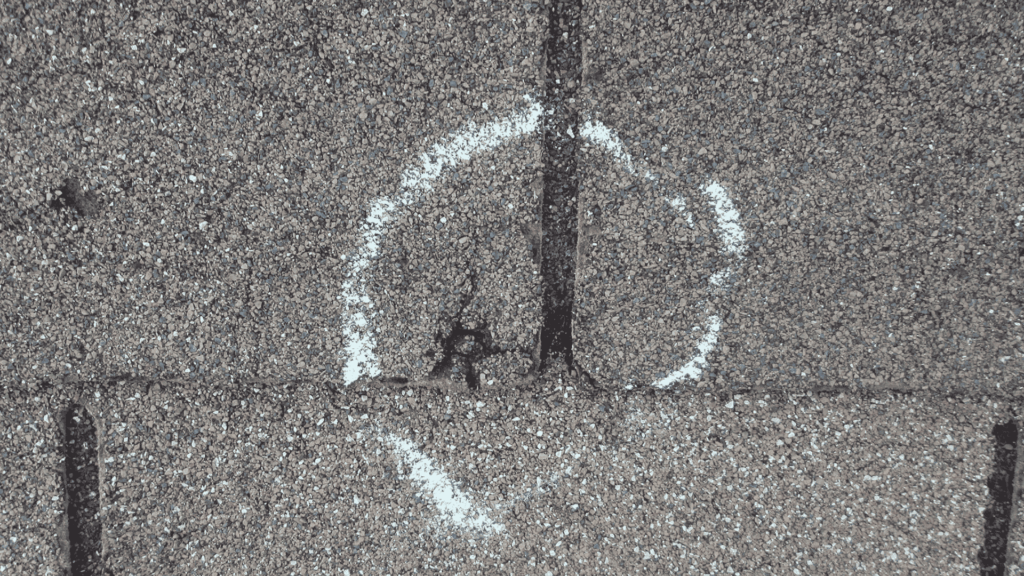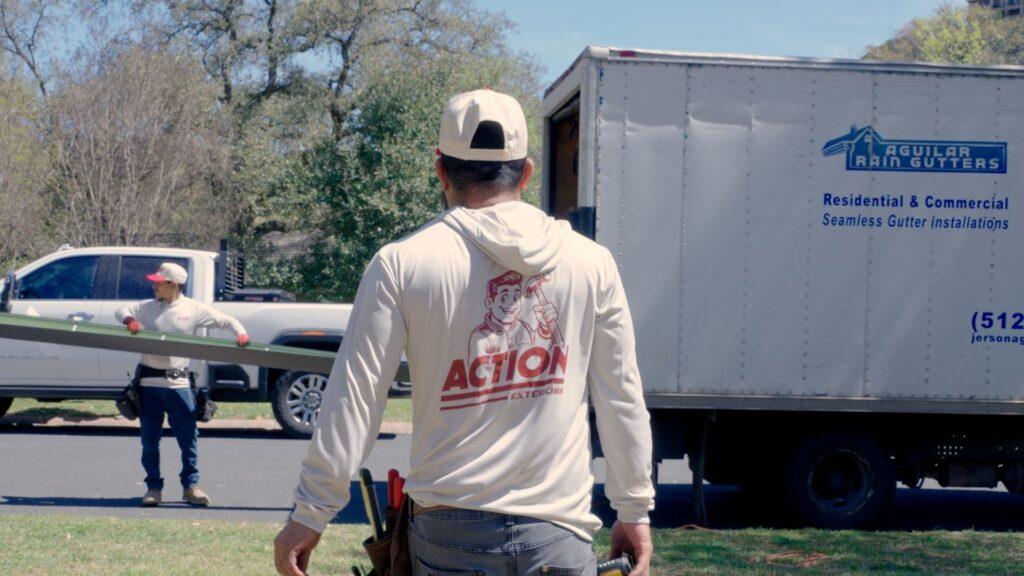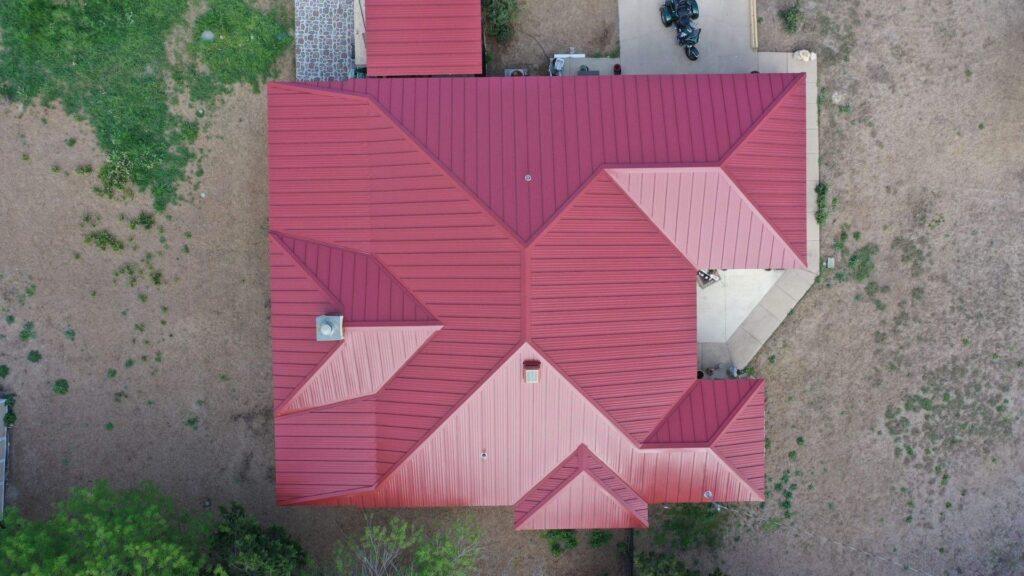Worst Impacts of Hail Damage on Roof: What You Need to Know 2025
As a homeowner, you take great pride in maintaining and protecting your most valuable asset. However, Mother Nature has a way of throwing unexpected challenges our way – one of them being hail storms. Hail is a type of precipitation that occurs during severe thunderstorms and can range in size from small marbles to large golf balls, causing significant damage to homes and roofs. The impact of hail damage on your roof can be devastating both financially and emotionally, leaving many homeowners overwhelmed with the aftermath.
In this blog post, we will discuss what causes hail storms, how they can affect your roof, signs of hail damage to look out for, and steps you can take to protect your home from future storms. So if you live in an area prone to severe weather events or have experienced a recent hail storm yourself – keep reading to learn all about the impacts of hail damage roof and what you need to know as a responsible homeowner.
Understanding Hail Damage and Its Impact on Roofs
Hail damage is an unfortunate and all-too-common occurrence that can have devastating effects on your roof. Formed within the powerful updrafts of thunderstorms, hailstones start as small ice pellets and can grow in size as they are carried by the storm before eventually falling to the ground. These frozen projectiles can cause significant damage when they strike the roof of your home.
The impact of hailstones on your roof can result in a wide range of issues, from minor cosmetic problems to severe structural damage. The force of the impact can shatter roofing materials, creating openings for water to infiltrate your home. Over time, this can lead to leaks, mold growth, and even structural failure if not addressed promptly.
Understanding the severity and potential consequences of hail damage is crucial for every homeowner. By recognizing the signs of hail damage and the risks it poses, you can assess the need for urgent repairs or even roof replacement. Taking proactive measures to protect your roof from hail damage can help maintain the integrity of your home and prevent costly repairs in the future.

The Causes of Hail Damage and Its Effects on Your Roof’s Structure
Hail damage to your roof is primarily caused by the forceful impact of hailstones hitting the roof’s surface during a storm. These hailstones, varying in size from marbles to golf balls, can cause considerable damage, especially to older roofs or those made of less durable materials.
When hailstones strike your roof, they can dent, crack, or even puncture the roofing material. This initial damage can weaken the roof’s overall structure, compromising its ability to protect your home from the elements. Over time, even minor hail damage can lead to significant problems. The damaged areas can allow water to seep into the underlying roof structure, causing rot and mold growth. This water intrusion, if unchecked, can eventuallylead to structural damage within your home, including compromised support beams and interior walls.
It’s also important to note that even if hail damage doesn’t immediately result in a leak, it can significantly shorten the lifespan of your roof. Each hit from a hailstone weakens the roof’s structure and reduces its overall durability. As a result, the roof may need to be replaced sooner than expected, leading to an unexpected and potentially large expense for homeowners.
Identifying Signs of Hail Damage on Your Roof
Homeowners should be aware of the telltale signs of hail damage to ensure timely repair and prevent further deterioration of the roof. Some of these signs are easily noticeable, while others might require a closer inspection.
- Dents or Pits in Roofing Materials: One of the most visible signs of hail damage is the presence of dents, pits, or bruises on your roof’s shingles or metal sheets. These depressions are created by the forceful impact of hailstones and can vary in size and depth depending on the size of the hail that hit your roof.
- Cracked or Missing Shingles: Hail can crack or dislodge shingles. If you notice shingles that are broken, missing, or have distinct crack patterns (often radiating from a central point), this could be a clear indication of hail damage.
- Granule Loss: Asphalt shingles are covered in tiny, granular particles that protect the underlying bitumen layer from the sun’s UV rays. Hail impacts can knock off these granules, exposing the asphalt layer. If you notice granule accumulation in your gutters or downspouts, it may be a sign of hail damage.
- Damage to Roof Fixtures and Vents: Hail damage is not limited to just the shingles or the roofing material. Roof fixtures such as vents, skylights, and chimneys can also sustain damage during a hailstorm. Look for dents or cracks in these areas.
- Leaks Inside Your Home: While not immediately visible from outside, water leaks inside your home can be a sign of roof damage caused by hail. Check your attic and upper-level rooms for signs of water intrusion, such as damp spots, discoloration, or mold growth.
If you notice any of these signs, it’s crucial to contact a professional roofing contractor to assess the extent of the damage and recommend necessary repairs.
The Importance of Addressing Hail Damage Immediately
Addressing hail damage to your roof immediately is essential for several reasons. First and foremost, prompt assessment and repair can prevent further damage to your home’s roof and overall structure. By taking immediate action, you can avoid the risk of small cracks or dents turning into larger issues like water infiltration, which can lead to rot and the growth of mold.
In addition, addressing hail damage promptly can save you money in the long run. By delaying repair work, you run the risk of more significant and costly damage occurring over time. However, by addressing the problem early on, you can mitigate these costs and potentially avoid the need for extensive repairs down the line.
Furthermore, addressing hail damage in a timely manner ensures the safety of your home and its inhabitants. Prolonged exposure to moisture due to hail damage can cause structural issues that compromise the integrity of your property. This can lead to potentially dangerous situations, such as ceiling collapse, if not addressed promptly.
Given these reasons, it is crucial to consult with a professional roofer as soon as possible after a hailstorm to assess the damage thoroughly and plan for any necessary repairs. Taking swift action will not only protect your home but also give you peace of mind knowing that your roof is in the best possible condition.

DIY vs Professional Repair – Pros and Cons
When it comes to addressing hail damage, homeowners often grapple with the decision of whether to take a DIY approach or hire professional services. Each option has its benefits and drawbacks.
DIY Repair Pros:
- Cost-Effective: Doing the repairs yourself potentially saves you the cost of labor associated with professional services.
- Flexible Timing: DIY allows you to work on the repairs at your own pace and convenience.
DIY Repair Cons:
- Quality of Work: Without professional training, the quality and durability of DIY repairs may be compromised, leading to future problems.
- Safety Risks: Roof repairs involve working at heights and using tools, which can be dangerous for those untrained.
Professional Repair Pros:
- Quality of Work: Professionals have the necessary training to deliver high-quality, durable repairs, potentially lengthening your roof’s lifespan.
- Inspection and Advice: Professional roofers can provide a thorough damage assessment and advise on the best course of action.
- Safety: Professionals are trained to do the job safely, reducing risk of injury.
Professional Repair Cons:
- Cost: Hiring professionals is generally more expensive than doing it yourself due to labor costs.
- Availability: You might have to work around the schedule of the roofer, which could delay repairs.
In weighing these pros and cons, it’s essential to consider your personal skills, the severity of damage, and the potential long-term impacts on your home’s integrity.

Filing an Insurance Claim for Hail Damage: Essential Tips
Dealing with roof damage caused by a hailstorm can be overwhelming. However, homeowners insurance often covers such damage, thus, knowing how to properly file a claim can alleviate some of the stress. Here are some essential tips to keep in mind:
- Document the Damage: Before starting any repair work, document the damage thoroughly. Take detailed photographs of the affected areas of your roof and any other damaged property. This will serve as evidence when filing your claim.
- Contact Your Insurance Company Immediately: Promptly inform your insurance provider about the damage. The sooner you file a claim, the earlier you can start the process and receive compensation.
- Understand Your Policy: Review your insurance policy to understand what is covered and what isn’t. Policies can differ significantly, and some may only cover the depreciated value of the roof or exclude cosmetic damage.
- Get a Professional Assessment: It can be beneficial to have a professional roofer inspect the damage as they can provide a detailed report, which can strengthen your claim.
- Keep Receipts of Any Temporary Repairs: If you need to make temporary repairs to prevent further damage, ensure you keep all receipts. These costs may be reimbursable by your insurance company.
- Don’t Accept the First Appraisal: If you feel the insurance provider’s appraisal is lower than expected, don’t hesitate to contest it. You can bring in your roofer or an independent appraiser to get another estimate.
- Follow Up Regularly: Once the claim is filed, follow up regularly with your insurance company to ensure the process is moving along. Keep a record of all communications for future reference.
Filing an insurance claim for hail damage might take time, but with patience and organization, the process can be made smoother, helping you get your home back to its best condition.
Preventative Measures to Protect Your Roof from Future Hailstorms
Preventing extensive hail damage to your roof begins with regular maintenance and making smart choices during roof installation. Here are some preventative measures you can adopt:
- Use Impact-Resistant Materials: When installing or replacing your roof, consider using impact-resistant materials specially designed to withstand hailstorms. These materials have been tested under severe conditions and have proven to be more durable.
- Regular Roof Inspection: Regular inspection by a professional roofer can identify and fix any existing damage that could worsen during a hailstorm. It’s recommended to have your roof inspected at least once a year, or after a major storm.
- Install Protective Features: Features like hail guards can be installed to protect skylights, HVAC units, and other roof components from potential hail damage.
- Maintain Your Gutters: Keeping your gutters clean and well-maintained helps prevent water damage caused by poor drainage during a storm. This can also prevent ice dams during the colder months.
- Prune Trees: Regularly prune trees around your property to prevent dead or weak branches from falling on your roof during a hailstorm, causing damage.
- Adequate Insulation: Ensure your roof and attic have adequate insulation. This can prevent heat loss, melting snow, and eventual ice damage during winter months.
Remember, while these steps can significantly reduce the potential for hail damage, they cannot entirely eliminate the risk. Always consult with a professional roofer to understand the best preventative measures for your specific situation.

Long-term Effects of Not Fixing Hail Damage on Your Roof
Delaying or ignoring hail damage on your roof can lead to serious long-term consequences.
- Extended Damage: Unrepaired hail damage can extend to other areas of your home. Water leakage from a damaged roof can seep into the walls, ceilings, and insulation, causing further damage.
- Lower Property Value: If the hail damage is not fixed, it can significantly devalue your property. Buyers often require a roof inspection and unrepaired damage can lead to reduced offers or potential sales falling through.
- Health Risks: Water leakage from unrepaired roofs can lead to mold and mildew growth, which can cause health issues such as allergies and respiratory problems.
- Increased Repair Costs: Over time, what might have been a simple repair can turn into a full roof replacement, drastically increasing the cost.
- Insurance Complications: Most insurance companies have a time limit within which you must report damage.
Delaying repair may lead to your claim being denied. These potential impacts underscore the importance of prompt repair when your roof has suffered hail damage.
In conclusion, filing an insurance claim for hail damage, taking preventative measures, and promptly repairing any damage is crucial for protecting your home’s integrity. It’s always wise to consult with a professional roofer to assess the extent of the damage and understand your options for repair or replacement. By following these essential tips and being proactive about maintenance, you can ensure your roof is well-protected from future hailstorms and other potential damage. Let us help you keep your home safe and secure for years to come.
Posted in